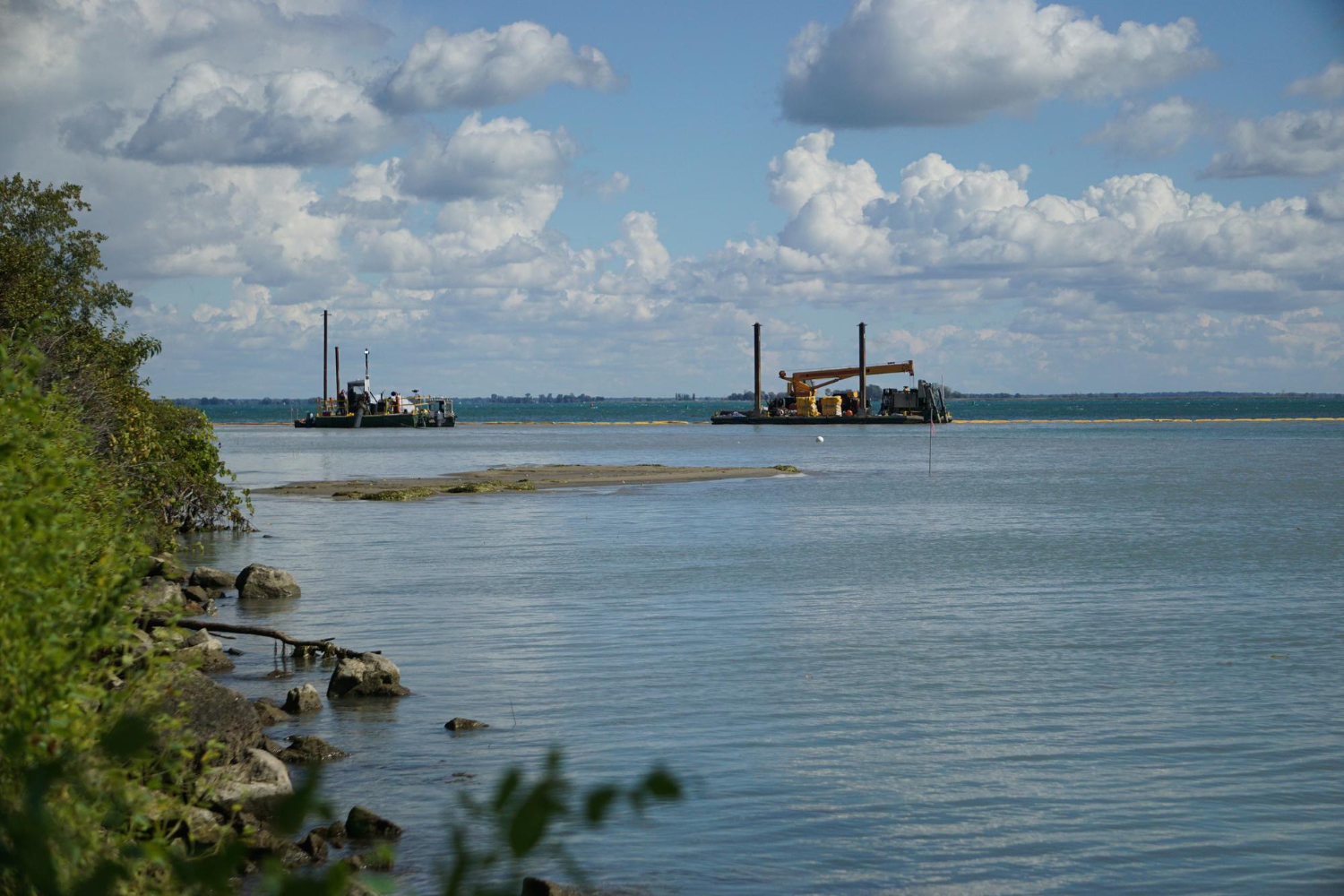
Lake dredging is an important process that helps to maintain water quality, restore recreational access, and preserve the ecological health of lakes. It involves removing accumulated sediment, debris, and other materials from the bottom of a lake or pond. If you own a lake or you’re in charge of managing a community or commercial waterbody, it’s important to keep an eye out for signs that dredging might be necessary.
If you’re looking for a top-rated company offering professional lake dredging services, reach out to the experts at Aquatic Restoration. We have been in business for over 35 years, offering a wide range of services. Today, we’ll explore some of the equipment used for lake dredging.
One of the most common pieces of dredging equipment is the cutter suction dredger(CSD). This machine uses a rotating cutter head to loosen compacted sediment before pumping it through a suction pipe to a designated disposal site. Cutter suction dredgers are ideal for removing stubborn, compacted materials and are often used for large-scale lake restoration projects. Because they can handle dense sediments, they’re a good choice when deep dredging is required or when the lakebed contains clay, silt, or other tough deposits.
Another widely used option is the hydraulic dredger, which relies on high-powered pumps to remove soft, fine sediment and transport it through floating or submerged pipelines. Hydraulic dredgers work properly in areas where minimal disturbance to aquatic habitats is necessary. They’re particularly effective for environmental dredging projects that aim to remove contaminated sediments without stirring up harmful materials.
For smaller lakes, ponds, or areas with limited access, mechanical dredgers such as backhoes, clamshell buckets, and excavators mounted on barges are often used. These machines physically scoop sediment from the lakebed and place it into nearby barges or trucks for transport. Mechanical dredging is better suited for shallow areas and projects that require precise removal around docks, marinas, or shoreline structures. However, because it can stir up more sediment in the water column, it’s not always the best choice for sensitive habitats.

In recent years, amphibious dredgers have become increasingly popular for their versatility. These machines can operate both on land and in water. This makes them ideal for projects that require shoreline restoration along with lakebed dredging. They’re particularly useful in shallow water bodies or wetlands where traditional dredging equipment cannot easily operate.
Smaller-scale projects, such as private pond maintenance in Georgia, use portable dredging units or submersible dredge pumps. These compact systems are easier to transport and operate; hence, they are a cost-effective choice for property owners who don’t require large-scale dredging. While they have less capacity than industrial dredgers, they are effective for removing accumulated sediment in smaller areas.
Regardless of the equipment used, lake dredging projects require additional support machinery, such as sediment dewatering systems, barges, and geotextile tubes for storing and drying dredged materials. Choosing the right combination of equipment ensures that dredging is hassle-free, environmentally responsible, and aligned with the project’s goals.
Aquatic Restoration is the company you can trust when you need professional and budget-friendly lake management services. From dredging and siphon installation to shoreline stabilization and retention pond maintenance, we do it all. With over 35 years of industry experience and a commitment to maintaining aquatic health, you can count on our specialists to get the job done right. When you’re in need of lake dredging services, we are the professionals you can trust to offer excellent services. Our team of seasoned professionals are equipped with state-of-the-art tools to provide high-quality services. Reach out today to book an appointment.
Sediment buildup is one of the biggest threats to lakes and ponds. It not only impacts water quality but also…
If you own a pond or lake, you know that proactive maintenance is an integral part of keeping the…
If you’ve ever walked outside and noticed your lake suddenly turn a murky shade of green, you’re not alone. Many…
Lakes are vital ecosystems that support wildlife, protect water quality, and enhance the quality of life for surrounding communities. Whether…
If you’re reading this, there’s a good chance you’re sick and tired of dealing with aquatic weeds that never…